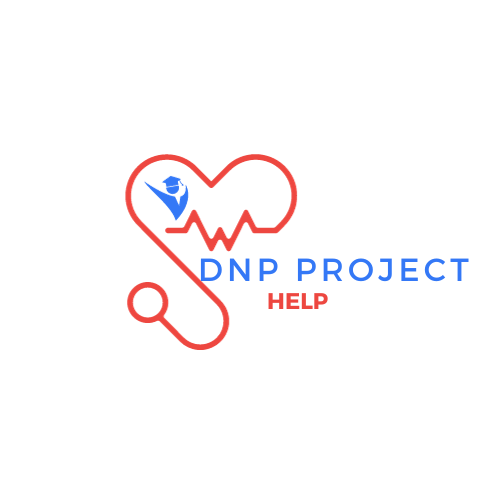
NURS 6565 – Synthesis in Advanced Nursing Practice Care of Patients in Primary Care Settings
In this final course, students will focus on becoming skilled in providing primary care. They will use the knowledge and skills they’ve learned in earlier courses to gain clinical experience. This helps them build confidence as they shift from being a registered nurse to an advanced practice nurse. Through classroom activities and case studies, students will explore important issues that nurse practitioners face when delivering safe, high-quality, and cost-effective care in a changing healthcare system. They will continue to develop and evaluate plans for managing patients with complex health conditions during clinical practice in primary care settings. The course emphasizes applying knowledge to manage clients and working closely with the client, family, and healthcare team. (Before taking this course, students need to complete NURS 6501, NURS 6512, NURS 6521, NURS 6531 or NUNP 6531, NURS 6541 or NUNP 6541, and NURS 6551 or NUNP 6551. Please note: This course involves at least 160 hours of practical training.)
Required Readings for NURS 6565 – Synthesis in Advanced Practice Care of Complex Patients in Primary Care Settings
- Bankston, K., & Glazer, G. (2013). Legislative: Interprofessional collaboration: What’s taking so long?” OJIN: The Online Journal of Issues in Nursing, 19(1).
- Christensen, C. M., Bohmer, R. M. J., & Kenagy, J. (2000). Will disruptive innovations cure health care? Harvard Business Review, 78(5), 102-112, 199.
- Ford, L. C.. & Gardenier, D. (2015). Fasten your seat belts – it’s going to be a bumpy ride. The Journal for Nurse Practitioners, 11(6), 575-577.
- Hain, D., & Fleck, L. (2014). Barriers to nurse practitioner practice that impact healthcare redesign. OJIN: The Online Journal of Issues in Nursing, 19(2).
- Hayes, E., Chandler, G., Merriam, D., & King, M. C. (2002). The master’s portfolio: Validating a career in advanced practice nursing. Journal of the American Academy of Nurse Practitioners, 14(3), 119.
- Iglehart, J. K. (2013). Expanding the role of advanced nurse practitioners -risks and rewards. New England Journal of Medicine, 368(20), 1935-1941.
- Jordan, L. M., Quraishi, J. A., & Liao, J. (2013). The national practitioner data bank and CRNA anesthesia-related malpractice payments. American Association of Nurse Anesthetists Journal, 81(3), 178-182.
- Kooienga, S.A. & Carryer, J.B. (2015). Globalization and advancing primary care health care nurse practitioner practice. The Journal for Nurse Practitioners, 11(8), 804–811.
- Miller, K. P. (2013). The national practitioner data bank: An annual update. The Journal for Nurse Practitioners, 9(9), 576-580.
- O’Connell, J., Gardner, G., & Coyer, F. (2014). Beyond competencies: Using a capability framework in developing practice standards for advanced practice nursing. Journal of Advanced Nursing, 70(12), 2728-2735.
- Reinisch, C. E. (2014). Loretta Ford: Envisioning the future. Clinical Scholars Review, 7(1), 82-84.
- Rhodes, C. A., Bechtle, M., & McNett, M. (2015). An incentive plan for advanced practice registered nurses: Impact on provider and organizational outcomes. Nursing Economics, 33(3), 125-131.
- Silver, H. K,. Ford, L. C., & Day, L. R. (1968). The pediatric nurse-practitioner program: Expanding the role of the nurse to provide increased health care for children. JAMA, 204(4), 298-302.
- Stanik-Hutt, J., Newhouse, R. P., White, K. M., Johantgen, M., Bass, E. B., Zangaro, G., . . . Weiner, J. P. (2013). The quality and effectiveness of care provided by nurse practitioners. Journal for Nurse Practitioners, 9(8), 492-500.
- Stelmach, E. I. (2015). Dismissal of the noncompliant patient: Is this what we have come to? The Journal for Nurse Practitioners, 11(7), 723-725.
- Watson, E. (2014). Nursing malpractice: Costs, trends and issues. Journal of Legal Nurse Consulting, 25(1), 26-31.
- Weber, S. (2006). Developing nurse practitioner student portfolios. Journal of the American Academy of Nurse Practitioners, 18(7), 301-302.
- Westrick, Susan J., & Jacob, N. (2016). Disclosure of errors and apology: Law and ethics. The Journal for Nurse Practitioners, 12(2), 120-126.
- NURS 6565 Week 2 Discussion: Ethical Challenges in Health Care for Practicing NPs
- Consider the following case study:
Patient Scenario:
| Patient Name | Age | Current Time | Symptom | Previous History | Action Taken |
| Mrs. ABC | 35 | 8 am | Sore throat | Daughter treated for strep | Calls mother (NP) for appointment |
Mrs. ABC, a 35-year-old woman with a sore throat, believes it might be strep due to her daughter’s recent treatment for the same. Unable to get a prompt appointment with her physician, she contacts her mother, a nurse practitioner, who schedules her in.
Follow-up Scenario:
| Patient Outcome | Diagnostic Tests | Prescribed Medication | Test Results |
| Patient Satisfied | Rapid Strep Test, Strep DNA Probe | Antibiotic | Negative for strep (48 hours later) |
Mrs. ABC, seeking immediate relief, is prescribed an antibiotic by her mother (NP) after a negative rapid strep test. The subsequent DNA probe results, received after 48 hours, confirm no strep infection.
Discussion Prompt (Texas):
By Day 3 of NURS 6565 Week 2 Discussion, share your views on whether Nurse Practitioners (NPs) should treat family members. Discuss the ethical dilemmas in such situations and provide insights into the laws governing NPs treating themselves, family, or friends in Texas.
Resources:
- Should Providers Treat Friends and Family
- Video on Providers Treating Family
- Ethical Dilemmas in Nursing
Week 2 Discussion: Characteristics of Ethical Dilemmas in Nursing:
- Exploring ethical dilemmas in nursing, including communication problems, interdisciplinary conflict, and multiple commitments.
- Ethical Decision Making Competency in Advanced Practice Nurses, focusing on phases of competency development and potential barriers.
- Chapter 13: Ethical Decision Making
- Theme 1: Communication
- Effective communication is crucial in resolving ethical conflicts. Listening plays a key role, allowing for diverse perspectives to be considered. Understanding ethical terms helps frame concerns, aiding in problem resolution. When dilemmas arise, good communication is essential for negotiation and resolution.
- Theme 2: Interdisciplinary Conflict
- Many healthcare ethical dilemmas involve multiple disciplines. Issues like refusal of treatment, end-of-life decisions, and confidentiality require an interprofessional approach. Differing viewpoints may lead to creative solutions or communication breakdowns, emphasizing the need for interdisciplinary collaboration.
- Theme 3: Balancing Multiple Commitments
- Ethical dilemmas often involve juggling commitments to various stakeholders. Nurses have fidelity obligations to patients, colleagues, institutions, the profession, and themselves. Analyzing and managing conflicting commitments are central to ethical deliberation.
- Ethical Issues Affecting Advanced Practice Nurses
- Primary Care Issues
- Nurse Practitioners (NPs) in primary care face ethical challenges related to personal values conflicting with professional responsibilities. Issues such as abortion, teen pregnancy, and financial constraints impact decision-making. NPs must navigate these challenges to ensure quality patient care.
- Acute and Chronic Care
- In acute care, APNs deal with ethical dilemmas like pain management, end-of-life decisions, and medical errors. They play a crucial role in collaborative decision-making, bridging communication between medical teams and patients or families. Ethical dilemmas in neonatal care highlight the complexity of balancing medical judgment with family values.
- Societal Issues
- Cost containment pressures in healthcare impact the traditional delivery of services. Balancing reduced expenditures with enhanced quality of life poses challenges. APNs must navigate these societal issues to ensure ethical patient care.
- Chapter 13: Ethical Decision Making
- Theme 1: Tensions in Healthcare Systems
- In managed care systems, tensions arise between providers and administrators due to external reviews of clinical decisions for reimbursement. Ethical concerns include limited access to appropriate care and potential compromises in the quality of care. The Patient Protection and Affordable Care Act may address some issues, but ethical tensions may persist.
- Example: Ordering a CT scan for abdominal pain faces delays in insurance approval, impacting timely patient care.
- Theme 2: Challenges in Technology
- Technological advancements, like genetic testing, pose challenges. APNs need to stay updated to counsel patients effectively. Genetic information raises ethical concerns related to privacy and confidentiality.
- Theme 3: Ethical Issues in Research
- APNs involved in research face ethical dilemmas, balancing clinician and researcher roles. Ensuring informed consent, fair access, and privacy are crucial. Quality Improvement initiatives present conflicts in maintaining individual patient focus versus ensuring study integrity.
- Theme 4: Access to Resources and Justice
- Access to healthcare resources and issues of justice present challenges, especially for underserved populations. APNs must navigate social justice concerns and ethical dilemmas related to resource allocation.
- Theme 5: Legal Issues
- Turning to the legal system for ethical issues’ resolution has become common. Legal perspectives and ethical decision-making should be distinguished. The law may not cover every situation, and ethical deliberation is often necessary.
- Example: The Schiavo case highlights conflicts between legal decisions and ethical concerns, with media involvement adding complexity.
- Table 13-2: Ethical Decision Making Models
| Model | Description |
| Principle-Based Model | – Guides decision making by ethical principles and rules (e.g., autonomy, beneficence, nonmaleficence, justice). |
| – Involves balancing and interpreting principles in the context of specific situations. | |
| – Emphasizes an appeal to principles for the final decision and moral justification. | |
| – Endorsed by the American Nurses Association Code of Ethics for Nurses. | |
| – Criticized for being too formalistic and lacking moral substance by some. | |
| – Common ethical language used in clinical practice. | |
| Casuistic Model | – Involves comparing current cases with paradigm cases. |
| – Examines dilemmas in a context-specific manner. | |
| – Assumes ethics emerges from human moral experiences. | |
| – Utilizes inductive reasoning, working from specific cases to generalizations. | |
| – May face challenges in selecting paradigm cases and potential variations in interpretation. | |
| Narrative Ethics | – Supplements principles by emphasizing the importance of full context. |
| – Gathers views of all parties to provide a more complete basis for moral justification. | |
| – Utilizes stories and narrators to substitute for ethical justification. | |
| – Privileges the importance of stories in ethical decision making. | |
| Virtue-Based Ethics | – Emphasizes the moral agent rather than the situation or action. |
| – Considers right motives and character as revealing more about moral worth than right actions. | |
| – Views character as more important than conformity to rules. | |
| – Focuses on the virtues and traits of the decision maker. |
- This table provides an overview of different ethical decision-making models, highlighting their key characteristics and considerations. Each model has its strengths and limitations, and their appropriateness may vary depending on the specific context and values of the decision makers.
he emphasizes the importance of considering the unique aspects of each case and how previous cases may influence current decisions.
The attending physician, adopting a care-based ethics perspective, values the importance of creating and sustaining responsive connections with patients and their families. Recognizing the daughter’s distress and desire for a second opinion, the physician aims to approach the situation with empathy and understanding. The physician considers the relational aspects of care and acknowledges the interdependence between the patient, family, and healthcare team. While respecting the patient’s advance directive, the physician also seeks to address the emotional needs of the daughter.
The social worker, applying a feminist ethics lens, emphasizes the importance of considering the experiences of the disadvantaged, such as women and other underrepresented groups. The social worker advocates for openness to different perspectives and is concerned with power differentials that may create oppression. In this case, the social worker supports the daughter’s request for a second opinion and ensures that her voice is heard in the decision-making process.
The Clinical Nurse Specialist (CNS), aligning with a narrative ethics approach, values the importance of the patient’s story in ethical decision-making. The CNS recognizes the uniqueness of each patient’s situation and the significance of gathering views from all parties involved. By considering the patient’s narrative, the CNS aims to provide a more complete basis for moral justification. The focus is on the importance of storytelling and understanding the context of the patient’s journey.
Exemplar 13-1: Application of Ethical Approaches in a Clinical Situation
| Approach | Decision-Making Perspective | Key Considerations |
| Principle-Based | – Favors patient autonomy and respect for persons. | – Emphasizes adherence to the patient’s advance directive. |
| – Believes decisions should align with the patient’s wishes. | – Recognizes the importance of autonomy in guiding care. | |
| Casuistic | – Supports the daughter’s request based on previous similar cases. | – Emphasizes the significance of context and individual cases. |
| – Advocates for exploring options for further consultation. | – Acknowledges the impact of past cases on current decisions. | |
| Care-Based | – Values creating and sustaining responsive connections with others. | – Recognizes the emotional distress of the daughter. |
| – Considers the interdependence between patients, families, and teams. | – Aims to address the relational aspects of care. | |
| Feminist Ethics | – Emphasizes openness to different perspectives and experiences. | – Advocates for considering the disadvantaged position of the daughter. |
| – Concerned with power imbalances and oppression in decision-making. | – Ensures the daughter’s voice is heard in the process. | |
| Narrative Ethics | – Values the importance of the patient’s story in ethical deliberation. | – Considers the uniqueness of each patient’s situation. |
| – Gathers views from all parties to provide a more complete basis. | – Focuses on understanding the context of the patient’s journey. |
Table: Ethical Decision-Making Framework (Adapted from Purtilo & Doherty, 2011)
| Steps in Ethical Decision-Making | Description |
| Information Gathering | Collect relevant information about the clinical situation, parties involved, obligations, values, legal aspects, and cultural/religious factors. Consider the contextual features of the case. |
| Problem Identification | Distinguish ethical conflicts from other issues (e.g., administrative, communication, lack of clinical knowledge). Identify situations where conflicting moral values or fundamental duties are present. |
| Identification of Involved Parties | Identify all individuals and entities affected by the ethical issue. Recognize their perspectives, obligations, and values in the context of the problem. |
| Clarification of Values | Examine and clarify the values inherent in the situation. Identify the core values of each involved party and explore potential conflicts or areas of common ground. |
| Identification of Relevant Ethical Theories | Consider ethical theories that may apply to the situation. Evaluate how each theory informs the decision-making process and helps in understanding the ethical dimensions of the issue. |
| Development of Alternatives | Generate alternative courses of action that address the ethical issue. Explore a range of options, considering their potential outcomes and consequences. |
| Decision-Making | Evaluate each alternative in light of ethical theories, values, and potential consequences. Make a decision that is ethically sound and respects the core values of all involved parties. |
| Implementation of Decision | Put the chosen decision into action. Communicate the decision to all relevant parties and ensure that the plan is carried out effectively. |
| Evaluation of Outcomes | Assess the outcomes of the decision. Consider whether the chosen course of action has resolved the ethical issue, and if not, revisit the decision-making process. |
Must Read:


